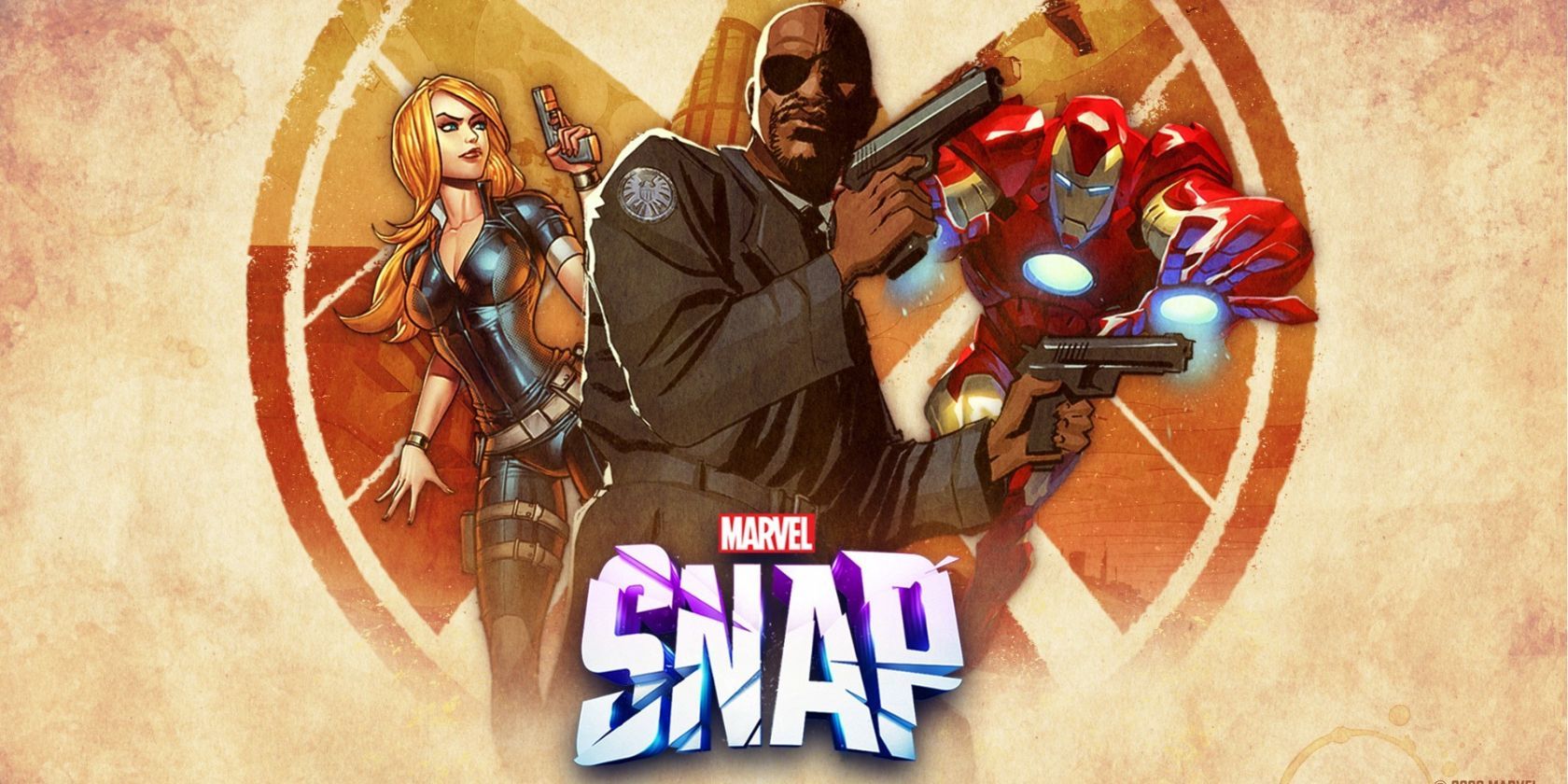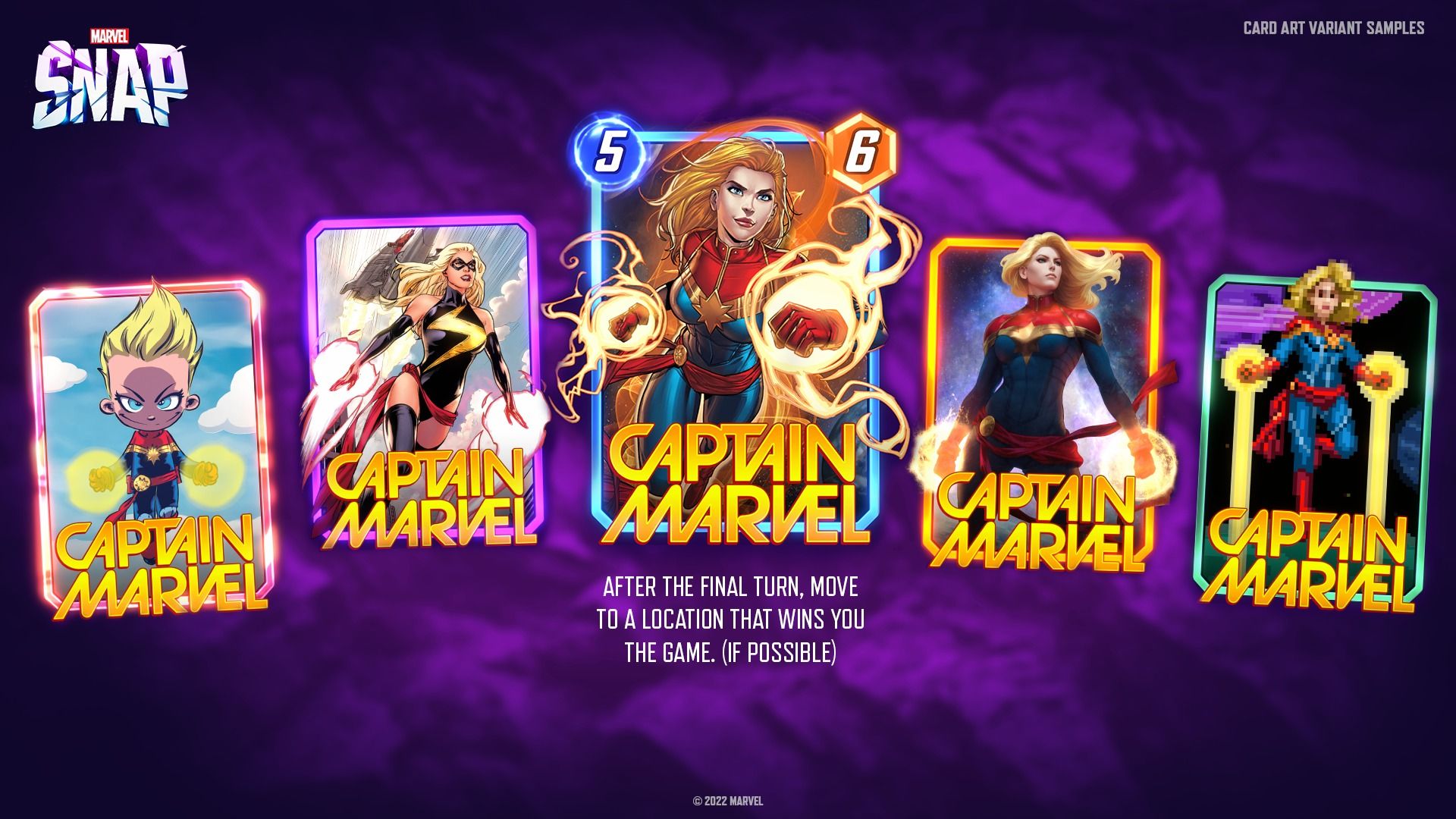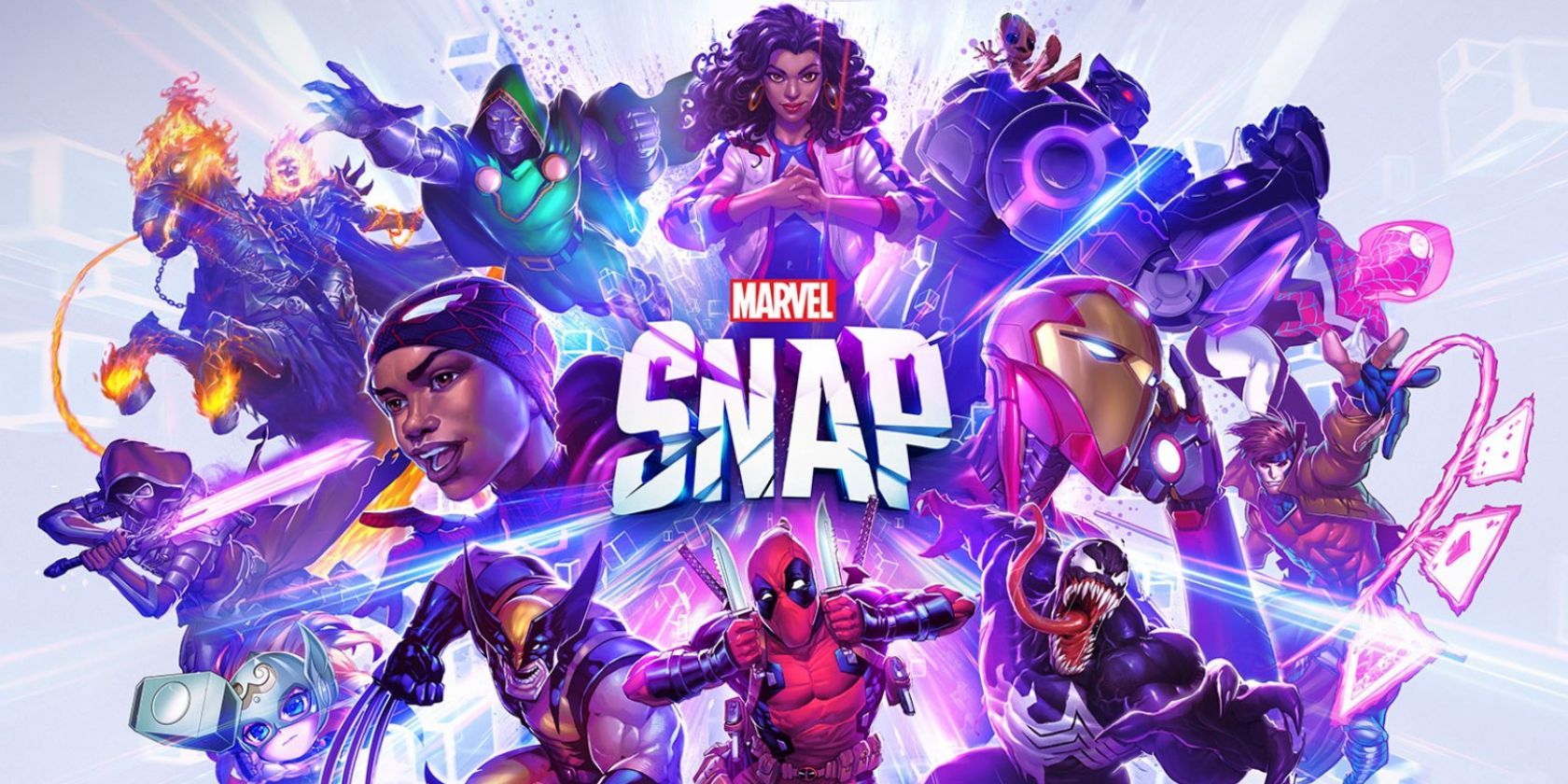Read update
- This review has been updated to address recent updates that have made notable changes to the game's monetization and gameplay.
Collectible card games are rarely based on an original IP. From Hearthstone to GWENT to the Elder Scrolls: Legends, they're usually a way to capitalize on existing interest in a brand. Success varies, but they've often suffered from the same issues of bloat and an inaccessible meta. Marvel Snap aims to capitalize on the interest of Marvel fans, but unlike its competitors, it offers a streamlined, competitive game that's easily accessible to beginners.
Even the best card games suffer from bloat. Over time, deck-building becomes a chore, and keeping up with the latest cards is a Herculean effort. Marvel Snap streamlines the entire process so that building your deck takes seconds rather than hours, and matches can be easily slotted into your commute. The limitation of 12 cards to a deck with no duplicates makes it easy to figure out synergies, with the game's cards revolving around straightforward abilities. Thanks to the titular Snap action, games escalate into rapid bluffing matches that rely as much on your confidence as your deck. Overall, it's a breath of fresh air that's a must-play for all CCG fans.
Marvel Snap: Rapid-fire, strategic CCG gameplay
Matches in Marvel Snap are straightforward on the surface but offer players multiple avenues to success. At its core is a simple Energy/Power mechanic. After each round in Marvel Snap, your max energy pool increases by one and then refreshes at the beginning of each new round.
Cards cost energy, with the most expensive cards boasting high power levels and game-changing abilities. However, what keeps each match fresh is the board's division into three unique locations, all hidden at the beginning of the game. Each location has a randomized ability chosen at the start of the game — and revealed one by one over the first three turns. Players win by having the largest power in at least two locations.
Marble Snap is a game of bluffing at heart, so predicting your opponent's actions and leading them into traps is essential to reaching victory.
Before each round, players decide where to play cards and then confirm their choice. Once both players have confirmed, cards are placed face-down simultaneously, with the player currently winning the most locations revealing their cards first. At any point during the game, a player can Snap, doubling the stakes. Each game of Marvel Snap is played for Cosmic Cubes, which determines where you stand on the ranked ladder. Initially, one cube is up for grabs, but this is doubled in Turn 6 and when either player Snaps. This move can bring the pot up to a massive eight cubes.
What if your opponent Snaps early, and you're not confident? You can retreat and avoid giving up too many of your precious cubes. The ranked ladder is divided into 100 tiers, each requiring ten cubes to rank up. A loss of 8 cubes is a significant loss, so walking away early from a game helps losses become more palatable.
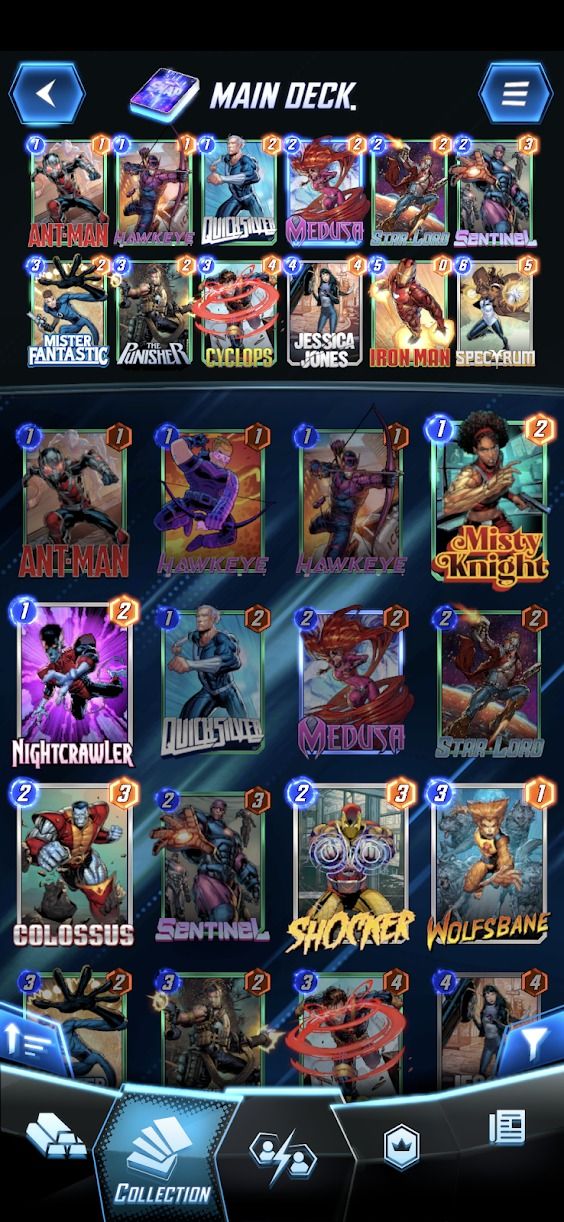
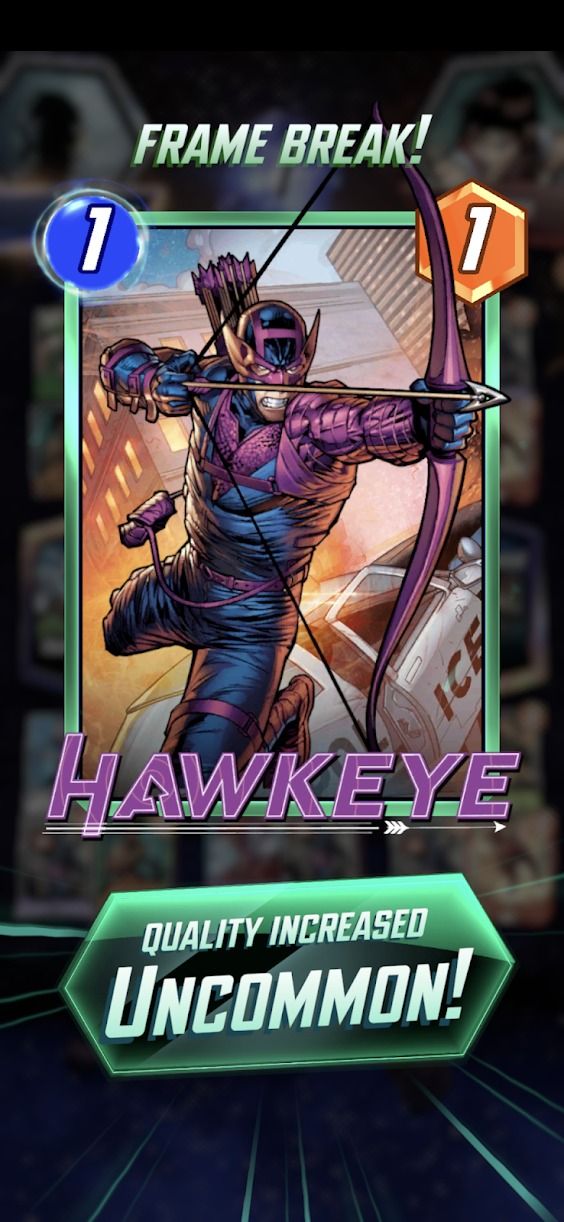
I'm usually a strict casual gamer, so the lack of alternate game modes initially put me off. However, Marvel Snap made me realize this reaction resulted from years of intimidating deck-building mechanics in other CCGs. It's easy to identify strong or weak combos with a limit of 12 cards per deck and digestible card abilities.
Cards in Marvel Snap can be divided into groups with a shared ability. There are five main types at the time of writing, each unique. The most common abilities are Ongoing cards, where these abilities persist for the entire game, and On Reveal, which can be triggered only once. More dramatic traits include Discard and Destroy, which remove cards from your hand or board, respectively. Many powerful decks can be built by grouping cards with shared abilities, which is a reliable strategy until you get to higher-level play.
Fortunately, this simplification of cards and decks doesn't make the gameplay boring, thanks to the varied locations. The three locations in each game are randomly chosen from a pool of over 50 unique options based on Marvel locations such as Oscorp Tower and the Dark Dimension. You won't see all of them until Turn 3.
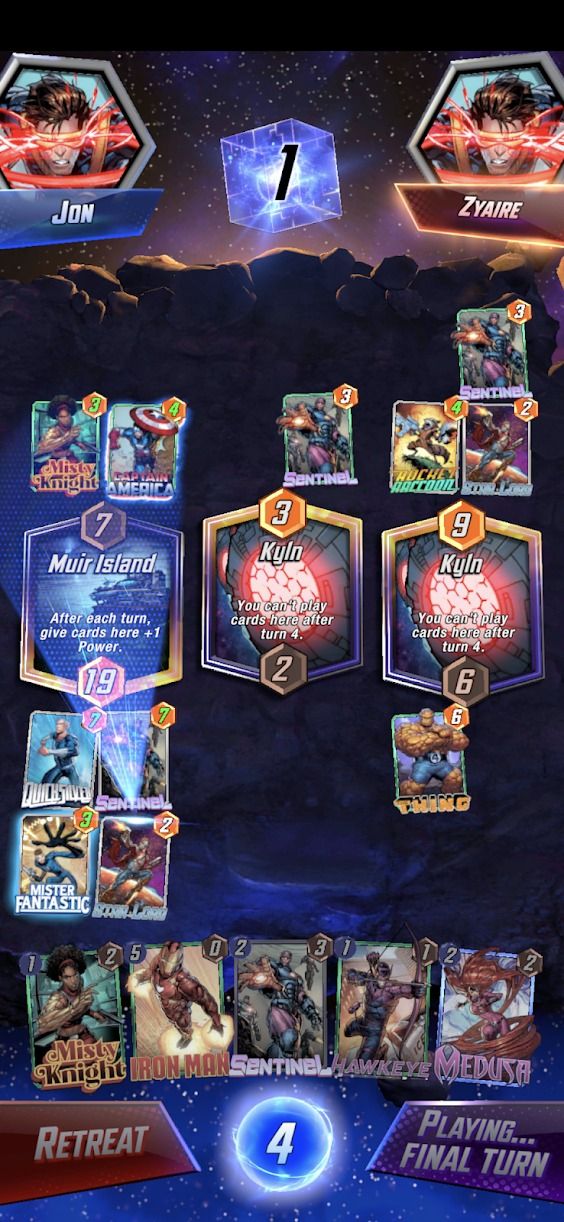
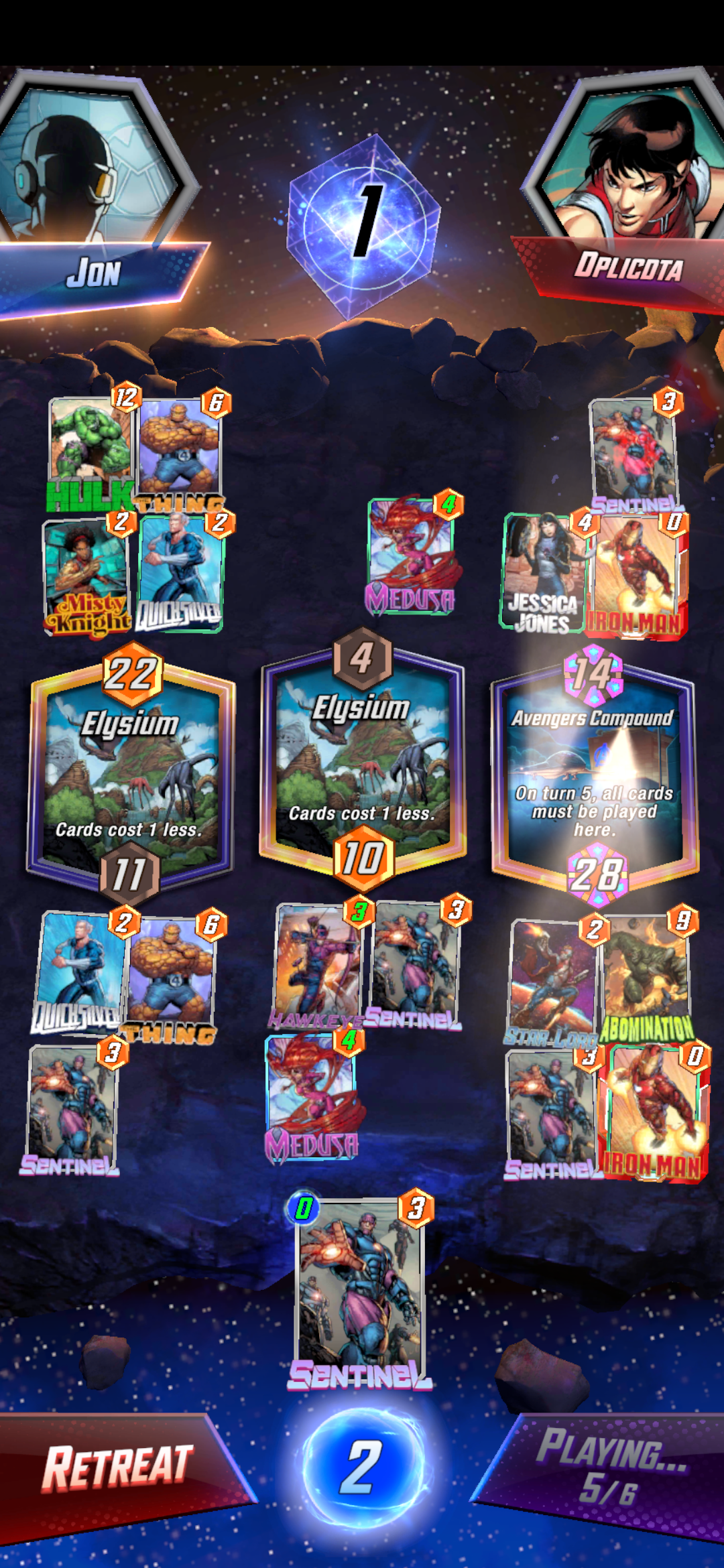
Having a core strategy in mind is vital, but locations can force you to rethink your plan entirely. While some won't be massively impactful initially (e.g., increasing the power of all cards in your hands by one), correctly utilizing these effects can turn a slight advantage into a crushing landslide. On the other hand, some locations cause a dramatic shift in gameplay, such as preventing cards from being placed for the rest of the game.
But managing your cards and your locations is only half the battle. Marble Snap is a game of bluffing at heart, so predicting your opponent's actions and leading them into traps is essential to reaching victory. With only 150 cards available, it doesn't take long to pick up common strategies and identify what your opponent is planning.
Having a core strategy in mind is vital, but locations can force you to rethink your plan entirely.
The disruption caused by locations may be unwelcome for those who prefer honing a strategy to perfection and obliterating opponents with flawlessly timed card draw. To an extent, I sympathize with this. Having a consistent strategy is challenging when each match is entirely different, but Marvel Snap is a game of adapt or die.
Building a deck that accommodates change and includes backups (challenging when you've only got 12 cards to play with) lets you play with the locations rather than against them. Still, there are regular "featured locations" where a specific location will often appear, so building a deck isn't the worst decision to make. It adds consistency to matches without removing Marvel Snap's special chaos.
Marvel Snap: Collecting cards is fair but slow
Of course, what happens outside the match in a CCG is just as important. This might be where Marvel Snap falters slightly with its simplistic approach to everything, which takes a little of the excitement out of collecting cards. It's one of the fairest games regarding monetization, though. Yes, paying real money will speed up your card collection; however, building a decent deck through gameplay won't take long.
Unlock cards in Marvel Snap by upgrading your existing ones. Each card offers a few variants with different art styles upgraded with in-game currency, universal Credits, and card-specific (not variant-specific) Boosters. When you complete a match, you are rewarded with Boosters for one of your cards, and Credits are earned by completing daily missions and increasing your collection level. Upgrading a card changes its visuals, including 3D effects and subtle animations. And the upgrade raises your collection level. It's an amusingly circular process but satisfying enough to make it worthwhile.
You can buy Credits to upgrade your cards, but there's a limit on how many times you can do this, so you'll mostly be earning your way to unlocking different cards. Also, there are no packs here; you'll unlock cards one by one through the collection track.
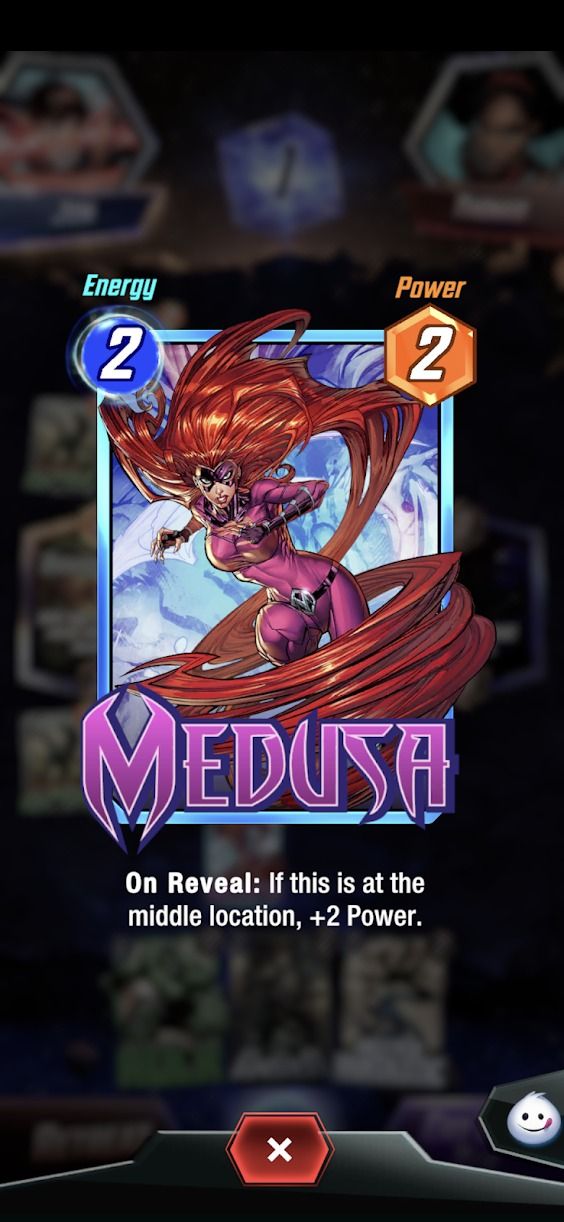
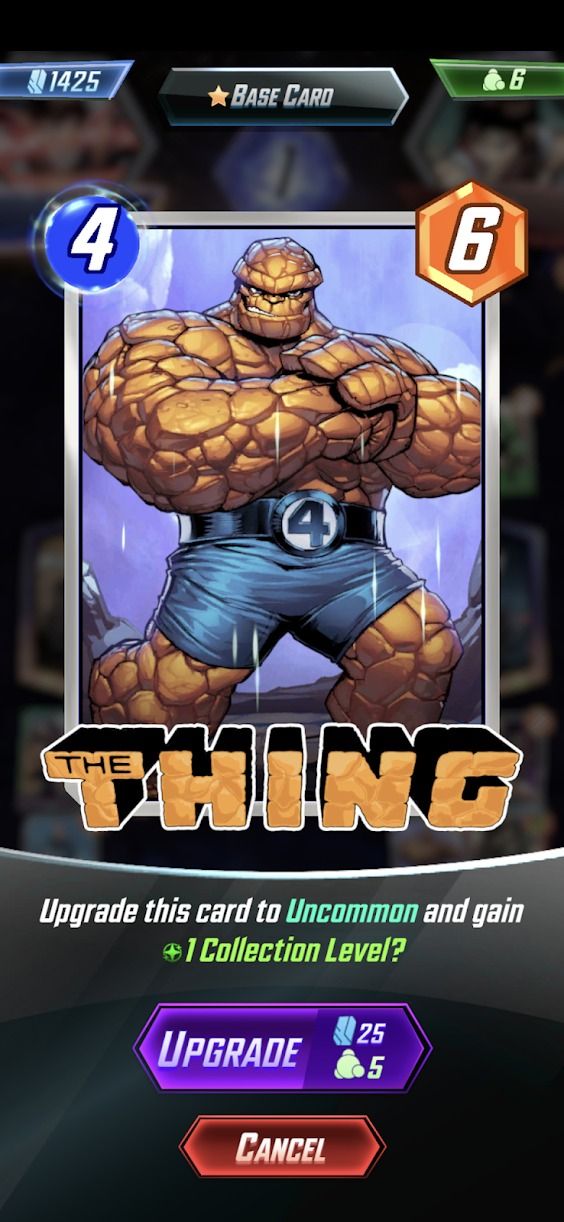
Cards within the collection track are split into three pools to help ease new players into the game. Each pool contains the same cards, but the order in which players unlock them is random. Cards in Pool 1 are straightforward, offering easy-to-understand synergies for beginners. Pool 3 cards, on the other hand, provide high-level players with powerful cards that can unlock truly devastating combos.
Unlocking all the cards in Pools 1 and 2 took me just under 40 hours, but my pace has slowed to a glacial crawl. Cards in these pools are unlocked at specific collection levels, but these cards are replaced by "Collector's Caches" in Pool 3. Collector's Caches have the chance to unlock either a new card, Credits, or Collector's Tokens.
Pool 3 starts at Collection Level 486, but it will take a long time for you to collect all the cards. One Reddit user unlocked their final card at collection level 3,233, with commenters mentioning they were missing many cards while in the 2,000s. With the best meta decks revolving around specific Pool 3 cards, you can expect a significant grind before you can compete with the best.
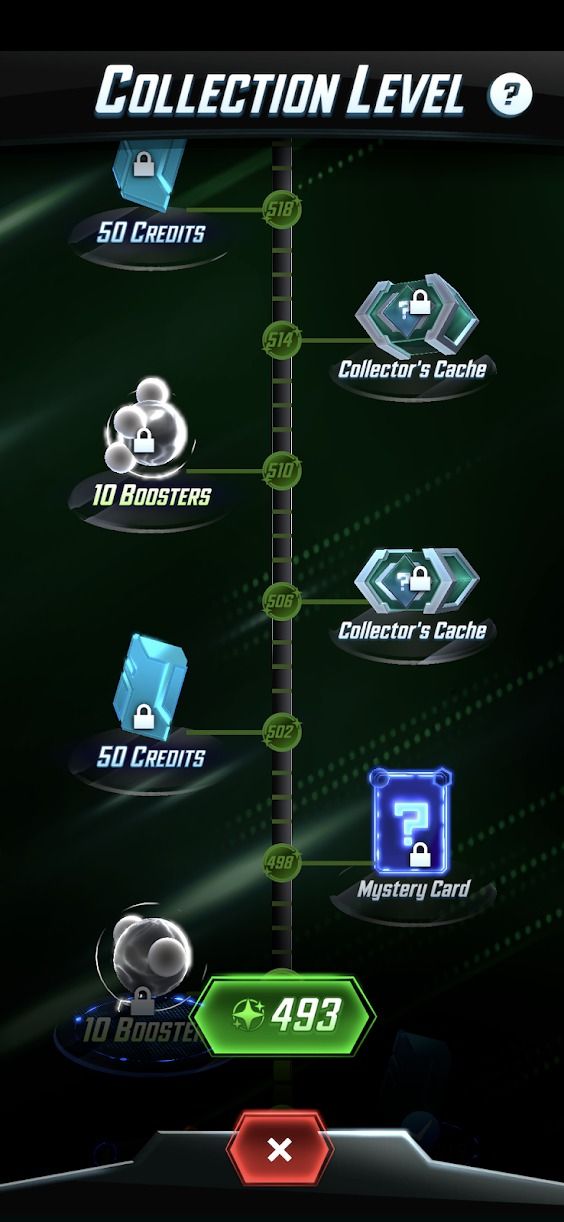
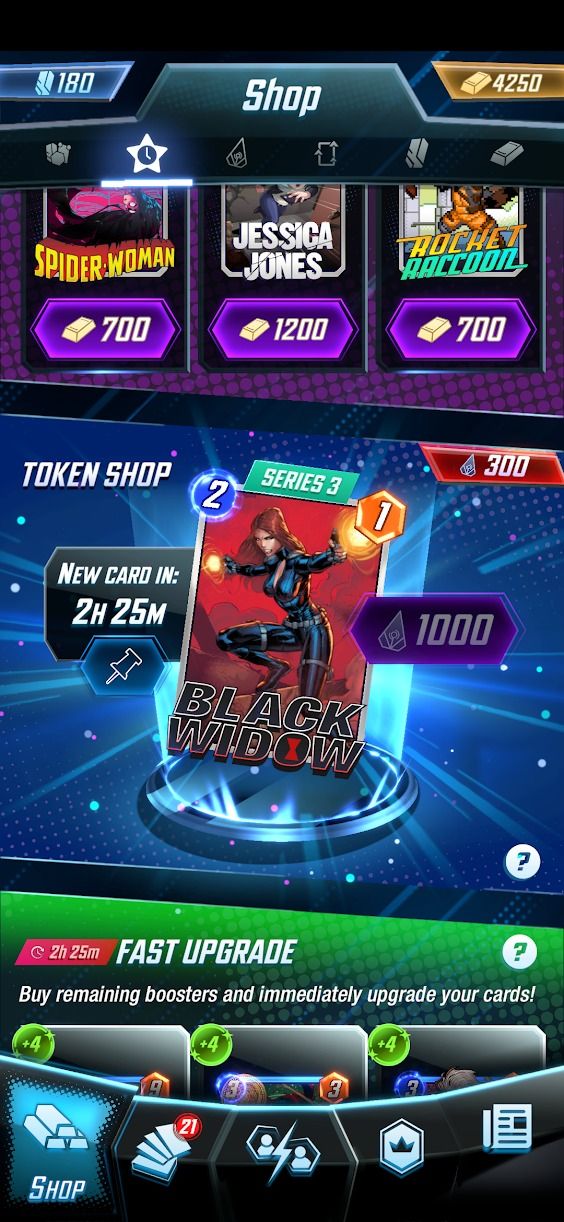
The latest game grind is a shame, especially compared to the rapid advancement in the earlier collection levels. This isn't as big of an issue as it sounds, as Pool 2 decks are varied and competitive enough to keep things interesting, but you'll get whiplash from how quickly progression changes. The addition of Collectors Tokens offers players the chance to buy single cards from the shop, but the rate at which you earn these tokens is still slow. The result is a better system, but it's still too slow.
Ironically, despite the only playable game mode being ranked, Marvel Snap feels like the most beginner-friendly CCG I've ever played. Despite the glacial progress at the higher collector levels, it rarely feels like a significant problem. Keeping the most competitive cards at higher collection levels ensures that those who unlock them will likely be playing in the higher ranks. Beginners have plenty of time to learn the game's mechanics before encountering these formidable meta decks.
Marvel Snap: Easy-to-swallow monetization
Marvel Snap's approach to monetization is far better than most of its brethren. Not once have I felt vital content was locked behind a paywall, as playing the game regularly unlocked all the content I wanted. While some cards are locked behind paywalls, the incentive seems to be to get the specific variants of those cards rather than the character itself.
Marvel Snap is betting that you'll want to buy variants of your cards. The store is dominated by options to buy alternative versions of your cards, and the final reward of the season pass is a card variant. At the time of writing, there was a single bundle on offer that required cash to buy; everything else needed Gold.
Gold is Marvel Snap's in-game currency used to buy card variants or Credits. Unless you snap up one of the limited-time bundles, you can only buy variants of cards you already own, and credits are purchasable a limited number of times a day. Each day, you'll have a selection of cards you can upgrade exclusively with Credits, but it's recommended to skip it. Overall, it's a fair system that discourages abuse.
The bundles in question are costly. At the time of writing, the two bundles on offer would have set me back over $100 if I had chosen to buy them without using my existing Gold stockpile. While these offer players a lot, you can only buy them once, preventing players from abusing the system.
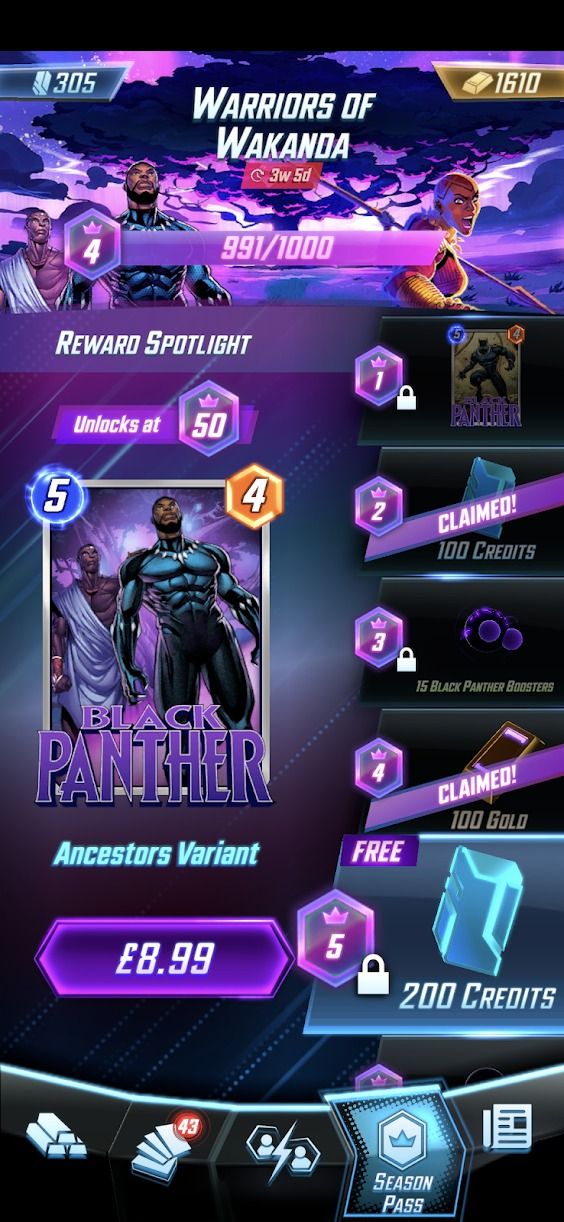
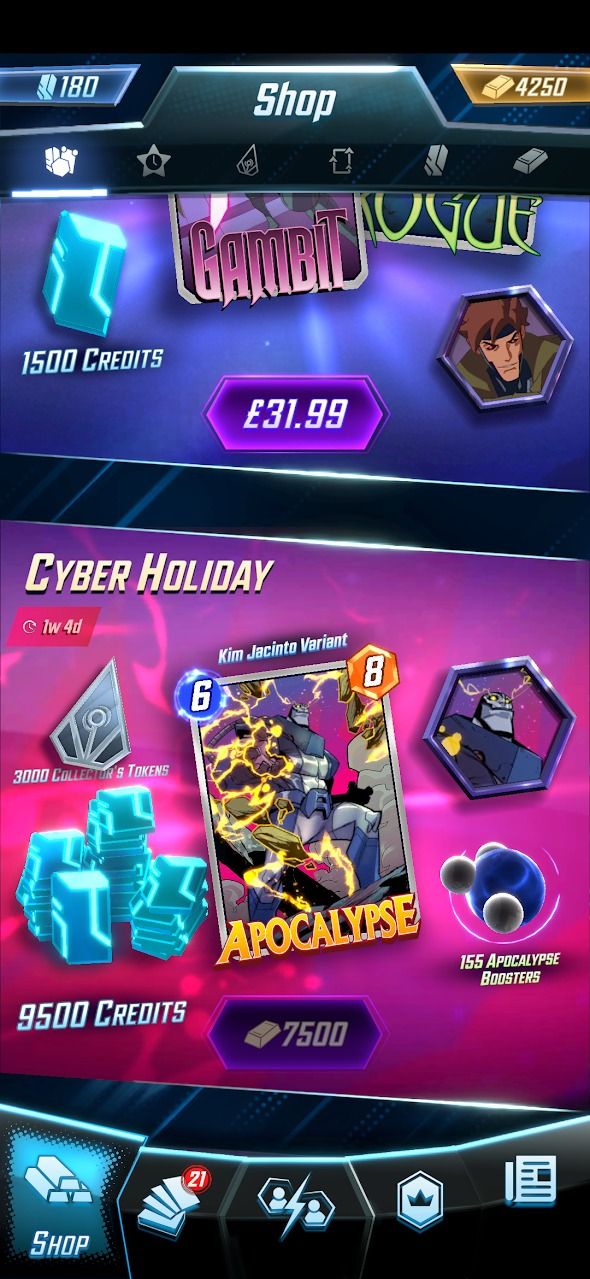
The season pass is where you'll probably spend most of your money. It can only be bought with cash and comes with an array of card variants, boosters, icons, gold, and credits. None of this will significantly change your gameplay, but the variants and icons are worth it. There is a free set of rewards, but these are barely worth paying attention to. It would be nice if Marvel Snap offered those unwilling to spend money more of a reward for completing missions.
Overall, Marvel Snap's monetization is fair and not pointless. It would have been easy for the game to go down the predatory route and lock many individual cards behind paywalls. Instead, daily missions reward you with credits and season pass points, which are refreshed every eight hours. Additional season pass missions offer more points, which are gradually unlocked over the weeks the season pass is around.
The future of Marvel Snap
Since its release, the initial allure of Marvel Snap has worn off slightly. Despite some significant changes, it requires just a little too much time to progress through the ranks.
But overall, I'm still hooked on Marvel Snap's innovative take on the card game genre. Experimenting with decks is brilliant fun, and executing a perfect combo of cards never gets old. I'm still losing as much as I'm winning, but I never feel cheated out of a victory. Luck still plays its part, but if it weren't for the randomness, I don't think I would enjoy the game as much as I am. But if the game's competitive nature is giving you a headache, try these advanced tips & tricks for Marvel Snap.
UPDATE: 2022/12/09 16:14 EST BY JON GILBERT
This review has been updated to address recent updates that have made notable changes to the game's monetization and gameplay.

